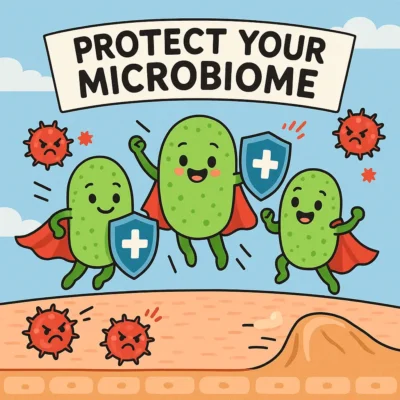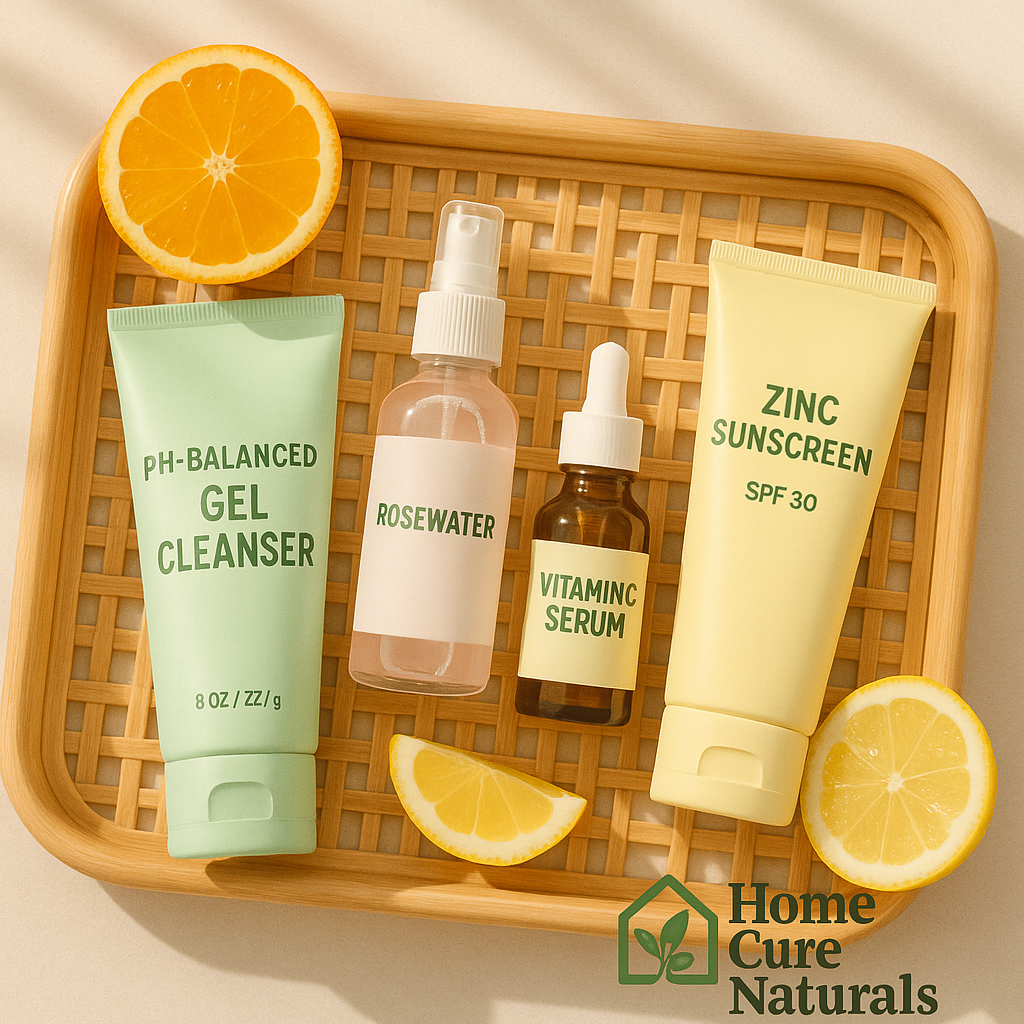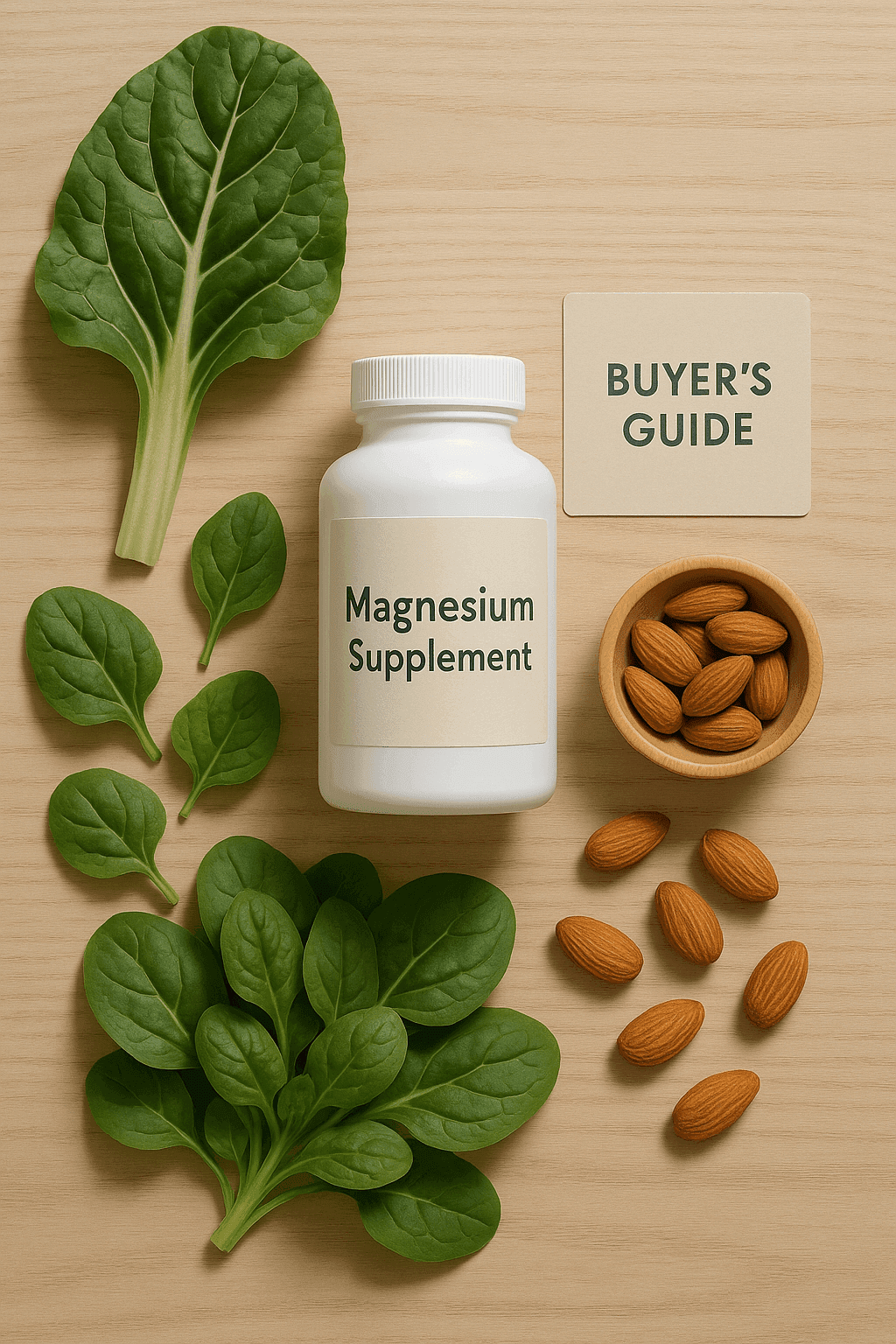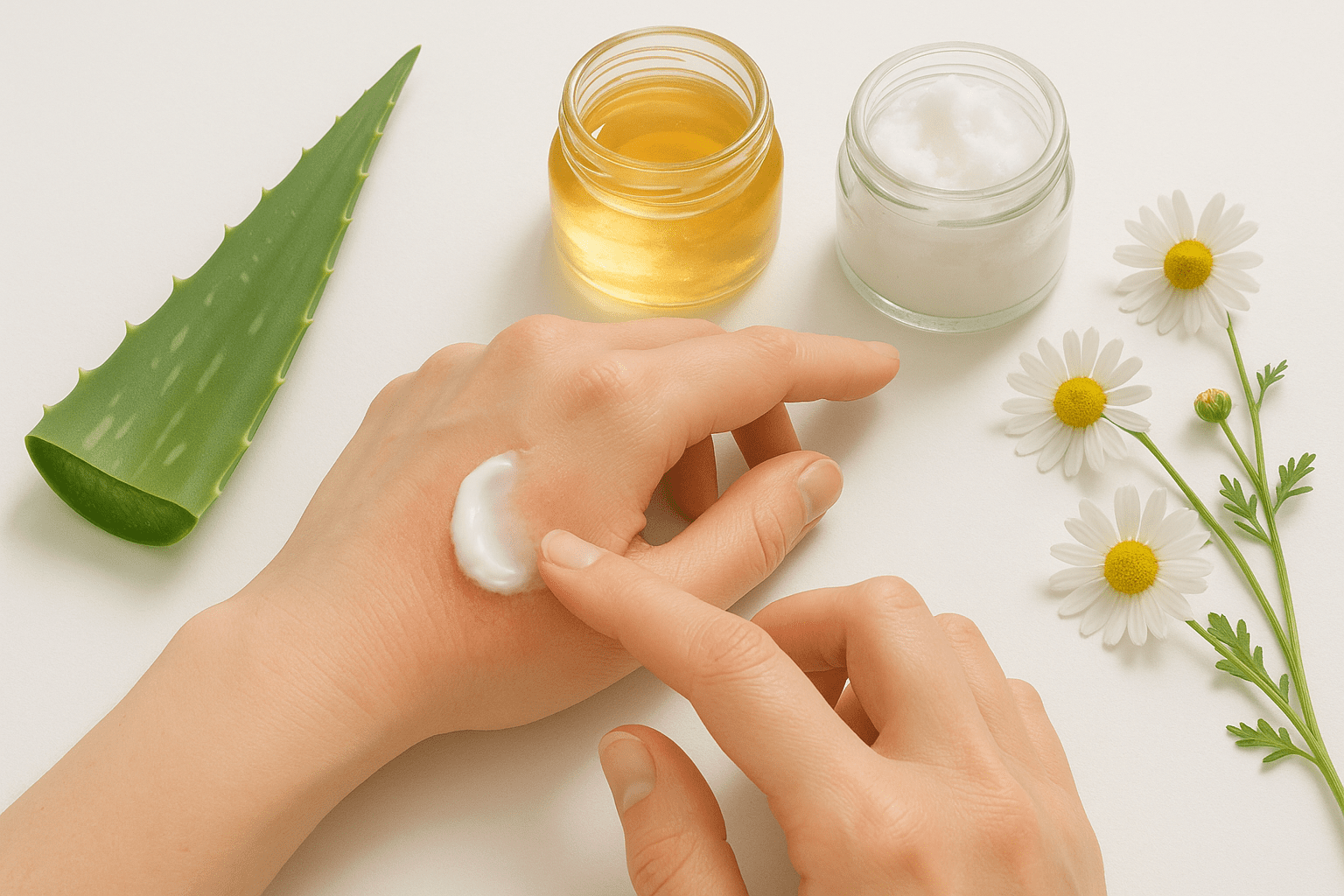
Introduction
At Home Cure Naturals, we believe skincare is where science meets soul. Think of your skin as a thriving forest, not just a surface that thrives on balance, nourishment, and ethical care. Whether navigating oily T-zones or desert-dry patches, this guide reveals practical wisdom to a natural skincare routine that’s kind to your skin and the planet.
1. The Science of Skincare: More Than Skin Deep
Your Skin’s Biology 101: The 3-Layer Defense System
The Epidermis (Your Shield):
- Outermost layer (thinner than a sheet of paper!)
- Contains melanocytes that determine skin tone
- Fun Fact: Completely renews itself every 28 days
The Dermis (Your Support System):
- Where collagen and elastin live (breaks down with age)
- Houses hair follicles and sweat glands
- Key Stat: Loses 1% collagen yearly after age 20
The Hypodermis (Your Cushion):
- Fat storage for insulation and protection
- Contains blood vessels that nourish upper layers
- Did You Know? Thinner in women than men
Why Natural Skincare is Science-Backed, Not Just Trendy
The Research Speaks:
- 2023 Dermatology Times study: 62% saw reduced irritation with plant actives
- Journal of Clinical Aesthetics: Fermented botanicals increase absorption by 300%
Nature’s Lab vs Synthetic:
| Concern | Natural Solution | How It Works |
|---|---|---|
| Inflammation | Turmeric (curcumin) | Blocks NF-kB pathway |
| Dryness | Squalane (olive-derived) | Mimics skin’s lipids |
| Aging | Bakuchiol (babchi plant) | Stimulates collagen like retinol |
The Microbiome Connection: Your Skin’s Ecosystem

Good Bacteria Matter:
- Balanced microbiome = stronger moisture barrier
- Prebiotics (honey, oats) feed good bacteria
- Warning: Antibacterial soaps disrupt this balance
DIY Biome Booster:
- 1 tbsp yogurt (lactic acid)
- 1 tsp aloe vera gel
- Apply 2x weekly
2. The 7-Step Natural Skincare Routine: Morning to Night

Morning Ritual: Protection & Prep
- Cleanse (60 sec): Start with a pH-balanced foaming gel containing willow bark (ideal pH 5.5). This removes overnight oil without stripping your skin’s natural moisture.
- Tone (30 sec): Spritz with chilled rosewater mist to soothe and balance pH. Avoid alcohol-based toners—they disrupt your moisture barrier.
- Treat (90 sec): Apply a vitamin C serum (10-15% L-ascorbic acid) and let it absorb for one minute before moving to the next step.
- Shield (45 sec): Finish with a zinc oxide SPF 30+ sunscreen. Reapply every two hours if you’re outdoors.
Nighttime Recovery: Repair & Renew
- Double Cleanse (2 mins): Begin with jojoba oil to melt away makeup (even waterproof mascara), then follow with a creamy oatmeal cleanser to calm skin.
- Exfoliate (2x weekly): Use a papaya enzyme mask for gentle exfoliation. For an Ayurvedic touch, time this with waxing moon phases for enhanced renewal.
- Treat (90 sec): Smooth on bakuchiol serum—a plant-based retinol alternative. For extra hydration, mix it with squalane oil before applying.
- Nourish (60 sec): Lock in moisture with a ceramide-rich night cream blended with moonflower extract. Gently massage upward to boost circulation.
Weekly Boosters
- Sunday Self-Care: Treat yourself to a 10-minute honey and turmeric mask, followed by gua sha lymphatic drainage.
- Wednesday Refresh: Recharge midweek with an aloe vera gel sheet mask and a cooling jade roller session.
3. Skincare Ingredients: Nature vs Science Showdown
The Best of Both Worlds for Every Skin Need
| Skin Concern | Nature’s Powerhouse | Science’s Superhero | How They Work Together |
|---|---|---|---|
| Dryness | Raw shea butter (West African sourced) | Ceramides (lipid-replenishing) | Shea provides instant relief while ceramides repair the moisture barrier long-term |
| Acne | Tea tree oil (Melaleuca alternifolia) | Salicylic acid (BHA 2%) | Tea tree reduces inflammation while BHA unclogs pores |
| Aging | Rosehip seed oil (cold-pressed) | Retinol (0.3-1% microencapsulated) | Rosehip nourishes while retinol stimulates collagen |
| Redness | Chamomile extract (German variety) | Azelaic acid (15%) | Chamomile soothes while azelaic acid calms irritation at cellular level |
Pro Tips for Smart Layering
- Morning: Vitamin C (natural) + Hyaluronic Acid (scientific) = hydration boost
- Night: Bakuchiol (natural retinol alternative) + Peptides (lab-developed) = anti-aging power duo
- Avoid Mixing: Pure vitamin C (L-ascorbic acid) with direct acids (AHAs/BHAs) – can cause irritation
When to Choose What
Go Natural If:
- You have sensitive/reactive skin
- Want eco-conscious options
- Prefer slow-but-gentle results
Choose Science When:
- Dealing with stubborn concerns (acne scars, deep wrinkles)
- Need clinically proven fast results
- Want stabilized formulations
Did You Know? Many breakthrough ingredients started in nature – salicylic acid was originally derived from willow bark!
4. Ethical Skincare: Beyond the Bottle
Cruelty-Free vs. Ethical: Understanding the Difference
- Leaping Bunny Certification: The gold standard for cruelty-free products. Ensures no animal testing at any production stage.
- Tip: Look for the logo on packaging or brand websites.
- Fair Trade & Ethical Sourcing: Goes beyond cruelty-free to ensure:
- Living wages for farmers and workers.
- Sustainable harvesting of ingredients (e.g., shea butter from women-led cooperatives).
- Brand Example: The Body Shop’s Community Trade Program.
- Vegan Formulations: No animal-derived ingredients (e.g., beeswax, lanolin).
- Watch Out: “Vegan” doesn’t automatically mean ethical labor practices.
The Packaging Problem: Waste vs. Innovation
- Stats That Shock: The beauty industry produces 120 billion units of packaging annually (most non-recyclable).
- Zero-Waste Heroes:
- Lush: Naked packaging (solid shampoos, package-free).
- Biossance: Sugarcane-based plastic bottles.
- UpCircle: Repurposes coffee grounds/chai spices into scrubs.
Case Study: REN Clean Skincare’s Ocean Rescue Mission
- The Challenge: 8 million tons of plastic enter oceans yearly.
- REN’s Solution: Partnered with fishermen to recycle discarded nets into packaging.
- Results:
- 80% reduction in virgin plastic use.
- 300+ tons of ocean waste repurposed since 2018.
- Takeaway: Support brands with closed-loop systems.
How to Spot “Greenwashing”
- Red Flags:
- Vague claims like “natural” or “eco-friendly” without certifications.
- Brands owned by parent companies that test on animals (e.g., a “cruelty-free” brand owned by L’Oréal).
- Trusted Certifications:
- B Corp: Meets high social/environmental standards.
- Ecocert: Organic ingredient verification.
5. Pro Tips for a Home & Nature Glow

Facial Yoga: The 5-Minute Lift
“Cheek Lifter” Pose:
- Purse lips like kissing, then smile wide (hold 5 seconds)
- Place index fingers on cheekbones, lift while resisting with facial muscles
- Repeat 10x daily to tone zygomatic muscles
Bonus Move: “Forehead Smoothie” – Press palms on forehead and slowly slide outward to relax tension
Seasonal Skin Cycling
Summer Essentials:
- Aloe vera gel as light moisturizer
- Mineral SPF with green tea antioxidants
- Refrigerated jade roller for AM depuffing
Winter Must-Haves:
- Whipped shea butter with calendula oil
- Humidifier with eucalyptus essential oil (2 drops)
- Silk-lined beanies to prevent wind irritation
Moon Phase Skincare
New Moon: Deep cleansing clay mask
Full Moon: Hydrating honey ampoule treatment
(Based on Ayurvedic principles of lunar cycles affecting skin absorption)
Kitchen-to-Face Quick Fixes
- 3-Ingredient Brightening Mask:
1 tbsp Greek yogurt + 1 tsp turmeric + 5 drops lemon juice (10 mins) - Instant Glow Trick:
Gently massage face with frozen chamomile tea cubes
Pillowcase Perfection
- Material: 100% mulberry silk (22 momme weight)
- Washing: Weekly with mild soap (never fabric softener)
- Bonus: Sleep on back with silk pillowcase to prevent “sleep wrinkles”
FAQ Section: Your Top Skincare Questions Answered
Q: Can I use coconut oil on acne-prone skin?
A: Coconut oil is highly comedogenic (pore-clogging) and may worsen breakouts. Instead, try:
- Squalane oil (olive-derived)
- Jojoba oil (most similar to skin’s natural sebum)
- Hemp seed oil (linoleic acid helps balance oily skin)
Pro Tip: Always check ingredients for “non-comedogenic” labels if you’re acne-prone.
Q: Are DIY skincare recipes actually safe?
A: Some are great, but caution is key:
Safe DIYs (patch test first):
- Oatmeal + honey mask (soothes irritation)
- Aloe vera + cucumber gel (cooling for sunburn)
Avoid These:
- Lemon juice (too acidic, causes photosensitivity)
- Undiluted essential oils (can burn skin)
Science Note: DIY lacks preservatives – use within 15 minutes and discard leftovers.
Q: How often should I exfoliate?
A: It depends on your skin type:
- Oily: 3-4x/week (BHA like salicylic acid)
- Dry: 1-2x/week (gentle PHAs)
- Sensitive: Once weekly (enzyme exfoliants)
Sign you’re overdoing it: Redness or stinging after products that didn’t bother you before.
Q: Can I skip moisturizer if my skin is oily?
A: Never! Oily skin needs hydration too:
- Use oil-free, water-based moisturizers
- Look for “sebum-regulating” ingredients like niacinamide
- Skipping moisturizer can actually trigger more oil production
Q: What’s the difference between chemical and physical sunscreen?
A:
| Type | How It Works | Best For |
|---|---|---|
| Chemical | Absorbs UV rays | Daily wear (lighter texture) |
| Mineral | Reflects UV rays | Sensitive skin (zinc/titanium dioxide) |
Eco Tip: Choose reef-safe mineral sunscreens without oxybenzone.
Q: Why does my skin sting when I apply products?
A: Likely causes:
- Damaged moisture barrier (over-exfoliating)
- Allergy (check for fragrance/alcohol)
- Actives overdose (using too many acids/retinols)
First Aid: Switch to only ceramide creams and aloe vera for 3 days

Conclusion: Your Skin’s Natural Healing Journey Starts Here
At Home Cure Naturals, we believe radiant skin blossoms when science-backed care meets nature’s intelligence. This guide isn’t just about routines—it’s a manifesto for skin that thrives in harmony with the Earth.
Why This Matters:
- Nature’s Pharmacy, Validated by Science:
- Bakuchiol’s retinol-like effects
- Fermented botanicals’ 300% absorption boost
- Proven by studies like Dermatology Times (2023)
- Ethics as Deep as Your Skincare Layers:
- Leaping Bunny certifications over vague “clean beauty” claims
- Packaging that heals the planet (like REN’s ocean-rescue bottles)
- Your Ritual, Your Revolution:
- SPF isn’t optional—it’s activism against premature aging
- Every shea butter purchase uplifts women-led cooperatives
Join the Natural Skincare Revolution
Seasonal Skin Savior: Bookmark this guide for our upcoming Monsoon Skincare Survival Guide (launching next month!)
💬 Community Wisdom: “What’s your favorite natural ingredient? Mine is __” → Drop yours below!
Deep Dive: Explore Home Cure Naturals’ Ingredient Encyclopedia to master every extract in your routine
At Home Cure Naturals, we prove daily that the most powerful skincare grows from the earth, not from labs. Your skin’s healing journey starts with one conscious choice.




